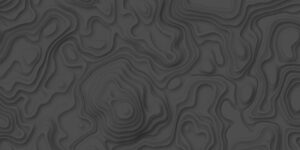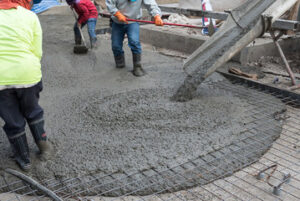Carved concrete is growing in popularity. This new technique expands concrete companies’ offerings and allows artists to produce more realistic rock, stone, and wood replicas.
Troy Lemon and Warren Ness led a workshop where participants used a special concrete mix to create faux rock walls and boulders. They also demonstrated how to color and texturize to make them look like real stone. Visit https://stonecreteartisans.com/ to learn more.

Concrete contractors working with carved concrete projects must take several precautions to prevent problems that may occur during the process. They must prepare the site for pouring and work with a concrete mix designed specifically for vertical applications. This mix should have a higher water content than traditional concrete and contain fine aggregate. This will make the concrete easier to carve, allowing for more intricate textures and designs. The mix should also have a long setting time so that the concrete can be worked on for days.
In addition, the concrete must be poured and carved while it is still wet. This will give the concrete more elasticity and make it much less likely to crack or break down over time. The concrete should be poured in small sections to avoid it drying out before the sculpting is finished. It is important to keep the concrete moist at all times to make it easier to shape and carve.
During a recent workshop, attendees helped Troy Lemon and Warren Ness apply, color, texture and carve a bas-relief panel at Health using Stone Edge Surfaces Pro Wall Mix. This specialty concrete was specially formulated to be very light and carveable, allowing them to create a realistic-looking stone facade on the wall.
The workshop participants used a variety of tools to shape the panel, but the majority of the sculpting was done by hand. A few of the attendees also used a hydraulic saw, which is a gasoline powered tool with an abrasive masonry blade. While the saw offers greater accuracy and speed than a power drill, it is not as portable or convenient and must be used outdoors due to the carbon monoxide emissions from the engine. It also produces a lot of dust and is difficult to control for detailed carving.
A more efficient and safer method for hand sculpting concrete is to use a sculpting mud. This is a cement-based product that can be mixed in different ratios depending on the stamp pattern, sculpting techniques and desired texture. It can be poured to a thickness of up to 2 inches and is suitable for creating themes, zoos and aquarium displays, decorative panels, public sculpture and themed environments. It is easy to use and requires no forming, can be carved in any direction, is waterproof and contains fire retardants.
Concrete is an extremely versatile and durable material that can be used in a variety of ways. Carved concrete is a form of textured concrete where the surface is carved to reveal a design, such as a stone wall or a figurative sculpture. It is sometimes used for patios, pool decks, driveways and walls. Carved concrete is a popular choice for architects, landscape designers and homeowners who are interested in the beauty of natural stone but prefer the durability of concrete.
While Moore used stone and wood for his models, he experimented with cast and carved concrete in the interwar years. Thirteen of the concrete works he made were ‘cast’, meaning that he poured a damp concrete mass into a plaster mould, which was then removed in sections (the divisions are clearly visible on these works).
For some of these cast concrete works, Moore would have embedded a small stone fragment within the concrete – for example a nodule of flint on the head and shoulders of his reclining figure or an ironstone pebble on the legs of another. This was common practice for sculptors at the time, as it both added texture and helped to give the finished work an appearance of being part of the surrounding landscape.
When pouring concrete, it is important to add the right amount of water. A little too much will make the concrete too runny and difficult to work with, while too little water will result in a stiffer, more compact mix. In either case, it is crucial that you take the time to prepare your mold properly and ensure that the concrete is poured evenly throughout the entire mould.
Once the concrete has been poured, it must set for a day before you can begin carving it. It is also a good idea to wear gloves and coat your hands in petroleum jelly to prevent the concrete from damaging them. The concrete is easiest to carve when it is still damp, so try to complete any detailing as soon as possible after the concrete sets.
Concrete carvers work with a variety of tools, depending on what they’re trying to achieve. But the simplest tool to use for decorative and hand carving is a hardened steel, box-end joint cutting knife designed specifically for working with concrete and concrete overlays. Using this simple concrete carving tool you can get a much more natural and realistic look when carving stone, flagstone or other materials into your carved concrete.
Joshua Russell explains that while he still works on outdoor projects like patios, fireplaces and seat walls, most of his clients are looking for something unique, like a faux rock wall or a water feature. And that’s one reason he thinks the carved concrete market is growing so quickly.
Unlike traditional concrete, this type of decorative and textured concrete is often made from a concrete-like mix that contains finer grades of sand, polymers, reinforcement fibers and other ingredients designed to provide strength and allow the resulting concrete to be stamped, sculpted, carved or used in some other way. The advantage to this kind of concrete is that it can be poured and carved during its wet stage, so the finished product can take on a wide variety of textures and forms without losing its new custom shape, such as sliding, sluffing or falling over.
The key to this process is getting the concrete just right when it’s poured. A thicker mix that’s more compacted and dense will give you a stronger, longer-lasting project. And it’s important to pour the concrete in small sections so that you can continue sculpting while it’s still wet.
If you’re attempting to make your own concrete carving mix, there are many different formulations that you can experiment with to find the best combination for your particular needs. A lot of these mixes are geared toward the vertical market and offer extended set times so you can stamp, sculpt or hand carve the concrete without it drying out too quickly.
Some, like the Pro Wall Mix from Walttools, even offers a special, vertical-specific carving admix that gives the mix superior texture and allows it to set faster. Other vertical-specific concrete mixes are designed to be lightweight and offer low slump so they’re easy to apply, while others have been formulated with color additives that help ensure they’ll accept exterior latex paints or water-based stains.
Concrete is a versatile material that can be shaped, carved and finished to achieve unique appearances. Finishing concrete can alter the color, strength and texture of the final product. It can also enhance the durability of the surface.
Trowel finishes are a classic concrete finishing method that is simple, inexpensive and effective. This type of finish is applied to the concrete after it has cured. Using either a magnesium or wood trowel, the concrete is trowelled to a desired roughness that can range from very coarse to almost glass smooth.
This type of finish is a popular option for pool decks, patios and driveways as it provides an excellent slip resistance. It is also used in commercial projects like sidewalks and warehouse floors.
Textured concrete finishes can be produced in a number of different ways, including exposed aggregate, broom finish and stenciled concrete. Exposed aggregate is a common decorative finish that exposes the coarse aggregates in the cement. This creates a rustic look that is both functional and attractive. The aggregates help to increase the traction on the concrete, making it ideal for outdoor use.
Broom finishes are created by brushing a coating over the cured concrete. This process creates a textured surface that can be either coarse or light depending on the bristle type and size of the brush. This type of finish is an effective choice for surfaces that need to be swept and maintained regularly.
Stenciled concrete is a popular decorative finish that mimics the look of bricks, tiles, natural stone and other geometric shapes. This type of finish is applied to the surface of concrete after it has partially cured, allowing workers to add a pattern that would be difficult or impossible to achieve with stamps.
Carving, stamping and staining concrete can be a complicated process. It is important to work with a professional that has the proper tools, skills and experience to ensure you get the results you want. A professional will also know when and how to apply expansion joints, which are needed to minimize cracking of the concrete.
 The preparation phase of concrete repair is the most important step in a successful repair. This includes ensuring that the concrete surface is free of any contaminants such as dirt, oil, grease, old sealer, dried adhesives, and coatings or surface treatments.
The preparation phase of concrete repair is the most important step in a successful repair. This includes ensuring that the concrete surface is free of any contaminants such as dirt, oil, grease, old sealer, dried adhesives, and coatings or surface treatments.